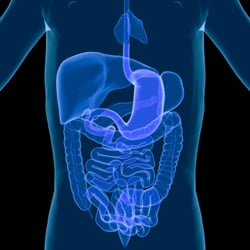
Abdominal Pain in Children
11 October 2006
Children often complain of a “tummy ache.” This is pain in the stomach or intestinal area, also called the abdomen. Abdominal pain is very common in children, and in many cases there’s no serious cause. But stomach pain can sometimes point to a serious problem, such as appendicitis, so it is important to know when to seek help.
Abdominal Pain in Children
Children often complain of a “tummy ache.” This is pain in the stomach or intestinal area, also called the abdomen. Abdominal pain is very common in children, and in many cases there’s no serious cause. But stomach pain can sometimes point to a serious problem, such as appendicitis, so it is important to know when to seek help.
Causes of Abdominal Pain
There are many possible causes for abdominal pain in children. Any problem with the stomach or intestines can lead to abdominal pain. Common problems include constipation, diarrhea, or gas. Appendicitis (infection of the appendix) almost always causes pain. An infection in the bladder or urinary tract, or even the throat or ear, can cause a child to feel pain in the abdomen. And eating too much food, food that has gone bad, or food that the child has a hard time digesting can lead to abdominal pain. For some children, stress or worry about some upcoming event, such as a test, causes them to feel real pain in their abdomens.
When to Call the Doctor
Children may complain of a tummy ache for many reasons. Many cases can be soothed with rest and reassurance. But if your child shows any of the symptoms listed below, call the doctor :
- Abdominal pain that lasts longer than 1 hour(s).Fever over 100.5°F.
- Vomiting or diarrhea that lasts longer than 6 hours.
- Inability to keep even small amounts of liquid down.
- Pain during urination.
- Pain in one specific area, especially low on the right side of the abdomen
Call 911 or go to the emergency room if the child:
- Has a fever higher than 104°F.
- Has blood or pus in vomit or diarrhea; has green vomit.
- Shows signs of bloating or swelling in the abdomen.
- Repeatedly arches his back or draws his or her knees to the chest.
- Has increased or severe pain.Is unusually drowsy, listless, or weak.
- Is unable to walk.
Treating Abdominal Pain
If a doctor’s attention is needed, he or she will examine the child to help find the cause of the pain. Certain causes, such as appendicitis or a blocked intestine, may require emergency treatment. Other problems may be treated with rest, fluids, or medication. If the doctor can’t find a physical reason for your child’s pain, he or she can help you find other factors, such as stress or worry, that might be making your child feel sick. At home, you can help the child feel better by doing the following:
- Take the child’s temperature every 4–6 hours.
- Have your child lie face down if he or she appears to be suffering from gas pain.
- If your child has diarrhea but is hungry, feed him or her only bland foods such as bananas, rice, applesauce, and toast.
- Avoid feeding your child fried foods, fast foods, or dairy products until the child feels better.
- Have your child take any prescribed medications as directed by your doctor.
- Check with your doctor before giving your child any over-the-counter medications.
Preventing Abdominal Pain
If your child is prone to abdominal pain, the following things may help:
- Keep track of when your child gets the pain.
- Make note of any foods associated with stomach pain.
- Limit the amount of sweets and snacks that your child eats.
- Feed your child plenty of fruits, vegetables, and whole grains.
- Limit the amount of food you give your child at one time (to help avoid overeating).
- Try eliminating dairy products like milk and cheese from your child’s diet.
- Make sure your child washes his or her hands before eating.
- Don’t let your child eat right before bedtime.
- Talk with your child about anything that may be causing
him or her worry or anxiety.
09-01-06 Montreal Children’s Hospital – SW
